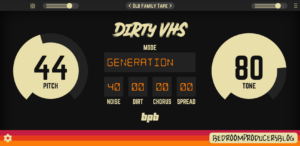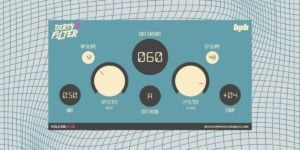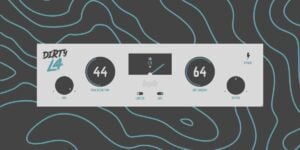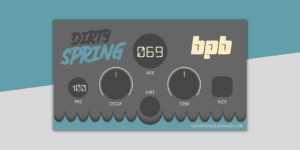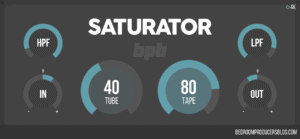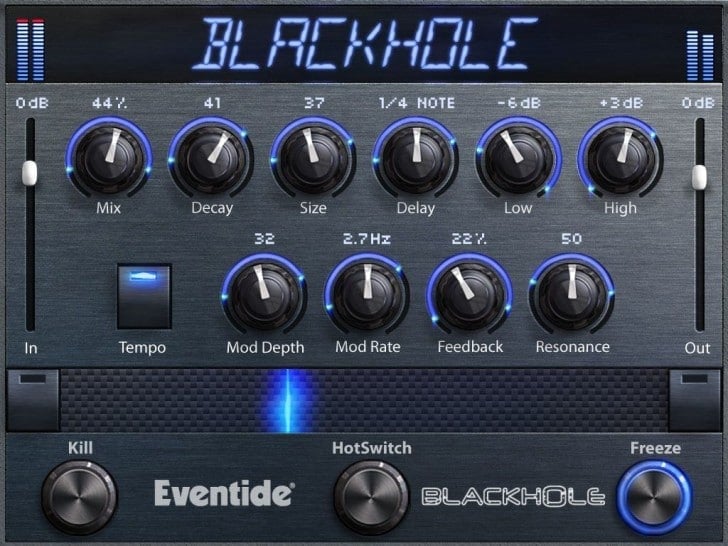If its title is any indication, Blackhole is not very good at dialing in small, subtle spaces. Of course, if you’re a starry-eyed ambient shoegazer like me, then subtlety probably isn’t a very high priority.
That being said, if you’re still reading this, I’m assuming you’re the sort of experimental audionaut who spends a considerable amount of time on the dark side of the moon – even though an EMT-140 plate reverb was used on that album – but anyway, you get the idea.
The Review
Blackhole ($199) is based on an algorithm that was originally used in Eventide’s DSP-4000 and H-8000 Ultra-Harmonizer rack mount units and later implemented in their Space Reverb guitar effects pedal. Of course, I don’t have any first-hand experience with this equipment, but I’ve listened to a fair share of professionally recorded demos and, in my honest opinion, Blackhole’s incredibly dense and diffuse sound is surprisingly true to that of its siblings.
I’ve used dozens of VST plugins in pursuit of the perfect reverb, and even though I’ve managed to nail down a few softwares I’ve become very attached to, none of them have yet to pull the sword out of the stone. Blackhole is not that reverb, but hey, it’s not trying to be. It knows what it is: a high quality spatial processor ideal for HUGE spaces, and one of few reverbs suited for live performance.
A “Ribbon Control” enables you to morph between two programmable states for any combination of knobs, all of which have two bright blue dots indicating start & stop points that move (both clockwise and counterclockwise) in accordance with the Ribbon Control as you move it from left to right.
Also, you can toggle between these two points with the “In” and “Out” buttons, snapping the Ribbon Control to its far left or right positions. A “Hot Switch” enables you to program alternate settings for knobs, switching back to their default position when the Hot Switch is depressed. Of course, I was a little confused about this before I learned how it works…
Before you can program alternate settings, you must first press and hold the Hot Switch until its surrounding blue ring starts to blink, and then you can program alternate settings for knobs – but be sure to finalize everything with one last left-click on the Hot Switch and you’re in business.
Obviously, the “Kill” switch is somewhat self-explanatory, disconnecting the reverb’s input; however, I was surprised to find out that you can actually modulate this control with a gate signal or a step LFO, which can be used to create expressive and dynamic alterations to an otherwise static reverb tail.
I was also pleased to find out that the Ribbon Control is fully automatable, which is really exciting because you can use several instances of Blackhole and then link each of their Ribbon Controls to a single automation lane or external MIDI hardware, giving you control over several dozens of real-time parameters all mapped to a single mod source!
Of course, you’re probably thinking I must have a big fancy computer if I can afford to run several instances of Blackhole in tandem, but I assure you, the CPU hit is jaw-droppingly dirt cheap. I’m serious. I can use up to four instances of Blackhole and stay within a quarter of processing capacity.
But enough about stability. Let’s talk about sound quality. Like I said from the start, Backhole is not for mix engineers who want to put a little air into their drums, even though small spaces are attainable. But there are other reverbs out there more specifically tailored for that purpose. Here, we’re going for wide open spaces and lush atmospheres. Eventide Blackhole is for people who THINK BIG.
I was a little unnerved by the “Gravity” knob, which essentially controls overall decay time, but what really threw me off is how drastically the low frequencies are attenuated with the Gravity knob at high settings, unlike common garden variety hall algorithms that accentuate low frequencies at longer decay times to reproduce the natural behavior of low frequencies traveling farther and longer than high frequencies. Unfortunately, this often produces unpleasant “boominess” in the reverb tail, so more contemporary algorithms often feature a subtle low roll-off and (on occasion) a very slight boost in the top end to create a smoother reverb tail that doesn’t wash out the mix or result in splitting migraines and damaged sound equipment. However, I think a little too much low frequency content is being rolled off, but I can’t complain too much. It still sounds amazing.
Reverse reverb is achieved by turning the “Gravity” knob to the left, which is a really cool trick, especially for people like me who like to create volume swells without having to set up a volume gate.
The “Size” knob is similar to most diffusion controls in charge of echo-density, but one thing I stumbled upon is (what sounds like) a reverse feedback effect within the diffusion network that produces some pretty cool artifacts when the Size knob is set to negative values — but be careful with the “Feedback” knob when doing this, which can result in an ear-shattering infinite feedback loop!
“Predelay” can be synced to your host application’s tempo settings or manually with time signature measures, and with the “Tempo” mode button switched off, you can dial in up to two-thousand milliseconds, which is unheard of. Most pre-delay controls top out at two hundred milliseconds, if that.
The “Low” and “High” shelving filters have preconfigured corner frequencies at 350 and 2000 Hz, which are good target frequencies, but two “Crossover” knobs would allow for a lot more control over the frequency curve, although that would involve a considerable adjustment to Blackhole’s snug interface, which is one of its selling points.
I haven’t seen any block diagrams of Blackhole’s algorithm, but when the “Freeze” switch is engaged, I can faintly hear metallic artifacts within (what I assume is) a feedback delay network, although I don’t think these artifacts are produced by the FDN so much as (again, what I assume is) a looped snippet of audio with crossfaded regions that are unfortunately very noticeable. Of course, you can troubleshoot this with the feedback settings, but sadly, the fly still very much remains in the ointment.
The Verdict
Overall, Eventide Blackhole is a wonderful sounding reverb and a powerful sound design tool. It’s certainly no “Jack of all trades”, but from my experience with most “bread and butter” reverbs, sound quality and tonal accuracy are all too often shoved in the back seat when the focus is stubbornly centered on versatility. Sometimes, it’s just better when a tool is fine-tuned for a specific task, and for the tall order of designing huge, infinite spaces that fold out into the far reaches of the imagination, Blackhole is arguably the best tool for the job.
Product page: Eventide Blackhole ($199)
Eventide Blackhole Review
Overall, Eventide Blackhole is a wonderful sounding reverb and a powerful sound design tool. It knows what it is: a high quality spatial processor ideal for HUGE spaces, and one of the few reverbs suited for live performance.
-
Features
-
Workflow
-
Stability
-
Design
-
Pricing

